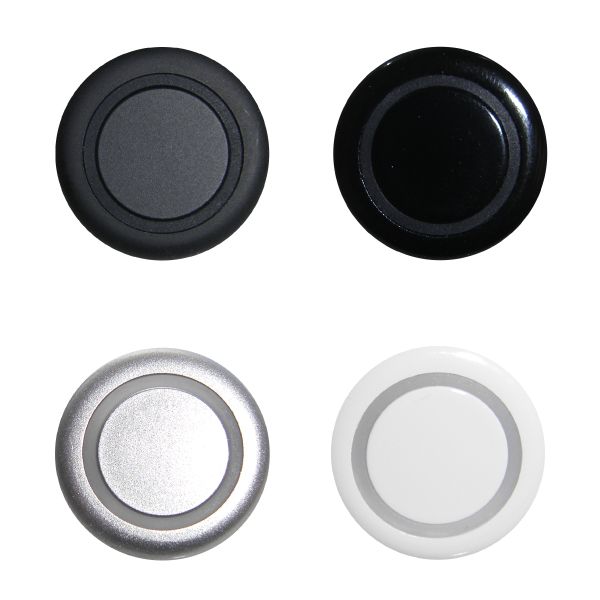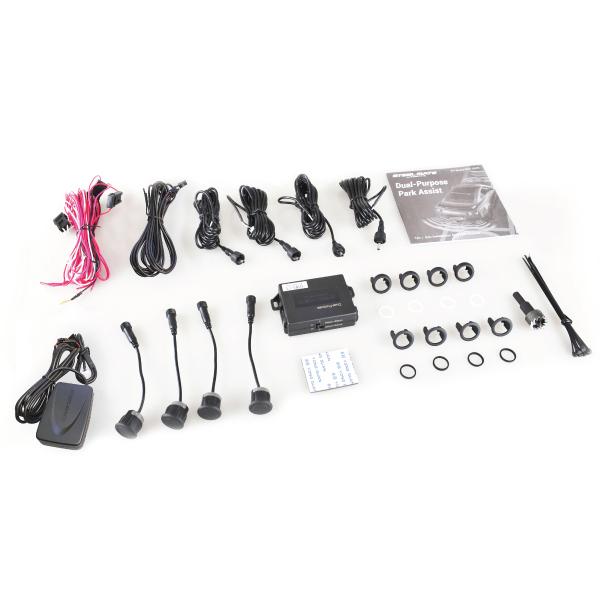
One of the main benefits of aftermarket parking sensors is that they offer additional assistance to drivers when parking or manoeuvring their vehicle in a restricted space.
No matter what car you drive, your line of sight can be hampered or limited by the physical structure of the vehicle.
A lack of visibility or insufficient coverage by mirrors and windows can create blind spots, making it difficult to pick out obstructions when they are not directly in your line of sight.
It is worth noting that although the benefits of aftermarket parking sensors are numerous, it is also important to remember that they are in-car helpers for drivers and not a substitute for driving carefully and paying attention to your surroundings.
However, they can provide invaluable information to make your driving safer for you, your passengers and other road users when manoeuvring into tight spaces.
At AJT Installs, we are specialists in the installation of aftermarket in-vehicle technology:
- Front and rear parking sensors
- Reversing cameras
- Immobilisers
- Dash cameras
- Trackers
- Alarms
- Blind-spot detectors
We care about the safety and security of our customers, their passengers, and their vehicles, which is why we provide a number of options for Steelmate parking sensors and reversing cameras to suit individual requirements and budgets.
Why not contact our expert team of technicians today to discuss your parking concerns and discover how aftermarket parking assistance technology can improve your line of sight for those difficult manoeuvres?
The benefits of aftermarket parking sensors explained
Parking sensors use ultrasonic or electromagnetic technology to detect obstacles around the vehicle, assisting drivers when parking in small or tight spaces.
You can read about how these different types of technology work in our article ‘aftermarket parking sensors’ on the AJT Installs website.
Of course, one of the main benefits of aftermarket parking sensors is that they help drivers to avoid collisions, thus minimising the chance of damage to their vehicle:
- Installed in the front and/or rear bumpers, parking sensors will detect nearby obstacles when the driver puts the car into reverse, obstacles that may not always be visible to the driver.
- Once an obstacle has been detected, the sensors will alert the driver through an audible beep, which will increase in frequency (and sometimes volume), as the vehicle gets closer to the object. This enables the driver to assess the distance between the object and the vehicle, so they can adjust their manoeuvring as necessary.
- As well as audible alerts, some sensors have visual indicators, for example, a screen fitted into the dashboard or camera feed, that clearly displays the obstacle, enabling the driver to see exactly where it is and again, adjust their driving behaviour to suit.
- If you have both front and rear parking sensors installed, you will be alerted to obstructions whether going forwards or backwards.
- We have all been there haven’t we? Trying to reverse park into a tight space and a pedestrian or cyclist decides to cross the road from the same space, right behind the vehicle where they are not easily seen? The audible and visual feedback provided by parking sensors allows drivers to make adjustments or brake to avoid hitting moving objects as well as stationary ones. But more than warning drivers of obstructions they may not be able to see, parking sensors can also warn those in the vicinity that the vehicle is reversing.
- Parking sensors provide information about the physical location that may be difficult to see through mirrors or windows, or that may be situated in a blind spot not covered by these driving aids, such as low walls or even children. The increased awareness of their surrounding contributes to the knowledge of the driver, leading to safer parking manoeuvres.
- Having additional information about their surroundings from parking sensors is especially beneficial to drivers when parking or manoeuvring in dimly lit areas, at night or during bad weather, when visibility is reduced.
- This increased awareness for their surroundings can prevent minor bumper damage caused through low speed collisions with low walls, poles, other vehicles, pedestrians or obstructions that are out of the line of sight.
- Parking sensors can provide invaluable assistance for drivers who may not possess the spatial awareness or ability to park in small spaces or judge distances accurately. This can reduce the stress they normally feel when parking in tight spaces or assessing the distance between their vehicle and an obstruction.
Other benefits of aftermarket parking sensors
Having an in-car helper for parking assistance can help to boost the confidence of those drivers who may find reverse parking especially difficult, such as newly qualified drivers, those who drive infrequently or those lacking spatial awareness.
They help to reduce the stress, driver fatigue, and embarrassment associated with these difficult manoeuvres by enhancing driver capabilities and improving overall driver confidence.
When compared to in-built parking sensors installed in high-end, expensive, or higher spec models, aftermarket parking sensors are more affordable and can be customised to suit individual driver preferences, rather than only having one available option.
For example, some people may want audible alerts only, or to adjust the volume or sound of the alerts because they are hard of hearing, while others may prefer to have both visual and audible alerts.
Aftermarket parking sensors, therefore, provide more options to choose from depending on personal preferences and budget.
In addition, installing parking sensors may enhance the value of your vehicle when you come to sell it.
Buyers could consider the sensors as a desirable safety feature or driving aid when deciding to purchase a used vehicle and having them already installed saves them the cost of installation.
Of course, you should notify your insurance company of all aftermarket modifications made to your vehicle.
One of the benefits of aftermarket parking sensors is that installation could actually bring premiums down because of the reduced risk of minor collisions.
Hopefully, this article has convinced you about the benefits of aftermarket parking sensors. Talk to the expert team of installers at AJT Installs to discuss the right solution for fitting parking sensors to your vehicle or any aftermarket in-car technology to enhance the safety and security of you, your passenger and your vehicle. Alternatively, click here to see the options for Steelmate parking sensors on the AJT Installs website.

